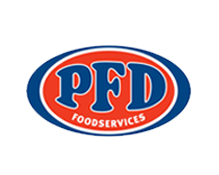Decision Tree
Decision tree: A decision tree is a graphical representation of possible solutions to a problem, where each node in the tree represents a possible decision, and the branches represent the consequences of each decision.
Decision trees are an invaluable tool in the field of data science. Their ability to accurately predict outcomes based on complex datasets has made them a popular choice for many businesses and organisations. This article will explore the fundamentals of decision tree technology, provide examples of its use cases, and examine how it can be used most effectively.
The concept behind a decision tree is simple. It takes input from users or systems, applies various conditions to that data, and then produces an output. The rules that determine the outcome are decided by the user or system before any data processing occurs. These rules allow the model to quickly parse through large amounts of information and make predictions with high accuracy.
When implemented correctly, decision trees can offer significant advantages over other machine learning models such as neural networks or random forests. They are relatively easy to interpret and require minimal time for training. Furthermore, they can handle both numerical values as well as categorical variables which makes them exceptionally versatile when dealing with real-world datasets.
What Is Meant By A Decision Tree?
A decision tree is a type of supervised machine learning algorithm used for both classification and regression tasks. It works by creating a tree-like structure, often referred to as a 'tree diagram', which consists of root node, internal nodes and leaf nodes that represent the decisions made about an individual data point or feature. This process, known as 'tree induction', uses information gain metrics such as expected value and gini impurity to determine how best to split the data into subgroups at each node in order to classify or predict outcomes.
The decision tree analysis can be further enhanced by using techniques like random forest, where multiple decision trees are created with different subsets of training data and then combined together to create more robust models. Decision trees have been widely adopted due to their simple visual representation and ability to provide clear insights on complex problems. Furthermore, they offer relatively fast performance compared to other machine learning algorithms while still being able to handle large datasets. As such, they remain one of the most commonly used tools for predictive analytics applications today.
What Is Decision Tree And Example?
Decision trees are a type of supervised learning algorithm that can be used to classify data. This technique is known as decision tree learning or tree induction. It uses both training and test sets to build the model, which consists of leaf nodes (predictions) and decision nodes (questions). The goal is to accurately predict outcomes based on different input variables.
When using decision tree learning, it is important to use cross-validation techniques in order to avoid over-fitting the data. Cross validation helps ensure that the decision tree model generalizes well for unseen data points. Additionally, regression trees can also be used when attempting to predict numerical values instead of classifications.
To summarise, here are five key takeaways about decision trees:
- Decision trees are an effective machine learning tool for predicting outcomes from given inputs
- They utilise two datasets - training set and test set - to construct a model with leaf nodes and decisions nodes
- Cross-validation is necessary in order to prevent over-fitting
- Regression trees can be used for numeric predictions rather than classification problems
- Achieving accuracy requires understanding each dataset’s characteristics
What Is The Purpose Of A Decision Tree?
A decision tree is a popular machine learning algorithm that helps to identify, classify and predict outcomes. It is a graphical representation of the decisions based on certain conditions. The purpose of a decision tree is to help make an informed decision or prediction by breaking down complex problems into smaller and simpler sub-problems.
Decision tree algorithms are used in various fields such as data mining, robotics, economics, healthcare and engineering. They are used to analyse large datasets with multiple variables and find patterns which can then be used for predictions. Decision trees have many advantages over other methods of making decisions including:
- Easy interpretation - Decision trees provide clear visual representations of all possible outcomes from each condition or branch. This makes it easier for users to understand how their decisions will affect the outcome of the problem at hand.
- Cost effective – Decision trees require less computational power than other methods making them cost efficient when dealing with large datasets.
- Accuracy – By using more accurate models such as random forests and boosting techniques, decision trees are able to produce better accuracy results compared to other methods.
The structure of a decision tree consists of nodes (the circles) connected by branches (the lines). At each node there is a decision point where the user must choose between two options; this choice determines which branch they take next until they reach terminal nodes or leaf nodes (the squares). A loss function measures how well the model performs after choosing one option over another before reaching the optimal solution at the end of the tree. From these terminal nodes we can calculate metrics such as precision and recall in order to assess whether our chosen path was correct or not. Furthermore, different types of decision trees exist depending on what kind of problem needs solving; classification trees are used in supervised learning while regression trees are used when predicting continuous values like stock prices or inflation rates. Ultimately, building an optimal decision tree requires careful consideration taking into account its complexity, accuracy and scalability requirements..
What Is Decision Tree And Its Steps?
A decision tree is a data structure used in machine learning and artificial intelligence (AI) to make decisions. It's typically constructed from a set of parameters, such as algorithms or financial data, that are analysed by the model classifier. This type of model can be used for various tasks like classification and regression analysis. The underlying principle behind decision trees is the concept of recursive partitioning, which means dividing the dataset into smaller subsets – each subset containing similar objects according to some criteria.
At its core, a decision tree consists of nodes that represent variables related to the problem being solved; edges connecting these nodes define relationships between them; and leaves representing terminal states with associated outcomes. To develop an effective decision tree requires knowledge about how to construct it properly and use it efficiently. As part of this process, several decision tree maker tools exist to help you create one tailored to your needs. Some popular examples include: Decision Tree Algorithm, Decision Analysis Tools, Decision Cycle Model of Computation, Decision Trees with Financial Data etcetera.
Building a successful decision tree involves selecting appropriate features and their corresponding values at every node so as to maximise accuracy while minimising complexity - balancing both precision and recall for optimal results. An important step in creating an accurate decision tree is validating it using testing datasets before putting it into production mode. In addition, there are techniques available such as pruning methods where branches of low importance can be removed to reduce over-fitting and improve generalisation performance on unseen data points.
Conclusion
Decision trees are powerful tools for making decisions and solving complex problems. Decision trees provide a visual representation of all the possible outcomes, allowing decision makers to weigh each option and make an informed choice. By providing a structured approach to problem-solving, decision trees can help organisations save time, money, and resources.
The steps in creating a decision tree vary depending on the complexity of the problem being addressed. Generally, it involves gathering data about the issue or situation at hand, analysing that information and forming hypotheses based off of it. Once this is done, a set of questions must be formulated which will lead either through different branches or towards specific solutions. Finally, those questions must be answered within the framework provided by the decision tree itself in order to arrive at a final solution.
In conclusion, decision trees offer organisations an effective way to determine optimal solutions when dealing with complex situations or issues. This tool provides a structured approach that helps identify potential risks as well as opportunities while also reducing costs associated with uncertainty. With its ability to visualise potential paths of action and outcomes involved in any given problem, decision tree analysis offers organisations an invaluable resource for making sound decisions quickly and efficiently.
PREVIOUS NARROW AI GLOSSARY TERM
NEXT NARROW AI GLOSSARY TERM
Decision Tree Definition
Exact match keyword: Decision Tree N-Gram Classification: Decision Tree Algorithm, Decision Tree Analysis Substring Matches: Tree, Decision Long-tail variations: "Decision Tree Algorithm", "Decision Tree Analysis" Category: Data Science, Machine Learning Search Intent: Information, Research Keyword Associations: Classification Algorithms, Supervised Learning, Predictive Analysis Semantic Relevance: Artificial Intelligence, Machine Learning, Data Mining Parent Category: Data Science Subcategories: Classification Algorithms, Supervised Learning, Predictive Analysis Synonyms: Artificial Intelligence, Machine Learning, Data Mining Similar Searches: Classification Algorithms ,Supervised Learning ,Predictive Analysis Geographic Relevance: Global Audience Demographics: Students , Researchers Brand Mentions: IBM , Oracle Industry-specific data : Program optimization Training time complexity Accuracy Performance metrics Overfitting Underfitting Pruning Cross validation Frequent patterns Reduction in features Miscellaneous rules Feature selection algorithms Memory usage complexity Constructive induction Heuristic tree growth Bag pruning feature evaluation Attribute selection measure Meta learning algorithm Induction of decision trees Incremental reduced error pruning Impurity of splitting criterion Chosen split points Goodness of split (Gini Index) Output information gain ratio Error rate tree pruning Simple and efficient indices Probability estimation tree pruning Grafting based decision trees Application rule extraction from decision trees Rare Events Handling Utilizing Ensemble of Classifiers Collaborative Diversified Rule Ensembles for Effective Rare event Prediction Enhanced IT2 Fuzzy Logic Using Uncertainty Neighbor Based Decision Trees Entropy based hybrid decision tree classifiers Nonlinear SVM Driven Hybrid Decision Trees for Intrusion Detection Time complexity improvement techniques in decision tree classification rules.Commonly Used Modifiers : "Algorithm", "Analysis", "Classification"Topically Relevant Entities : Artificial Intelligence ,Machine Learning ,Data Mining ,Classification Algorithms ,Supervised Learning ,Predictive Analysis ,Program Optimization ,Training Time Complexity ,Accuracy Performance Metrics Overfitting Underfitting Pruning Cross Validation Frequent Patterns Reduction in Features Miscellaneous Rules Feature Selection Algorithms Memory Usage Complexity Constructive Induction Heuristic Tree Growth Bag Pruning Feature Evaluation Attribute Selection Measure Meta learning algorithm Induction of Decision Trees Incremental Reduced Error Pruning Impurity Of Splitting CriterionChosen Split Points Goodness of Split (Gini Index) Output Information Gain Ratio Error Rate Tree Pruning Simple And Efficient Indices Probability Estimation Tree Pruning Grafting Based Decision Trees Application Rule Extraction From Decision Trees Rare Events Handling Utilizing Ensemble Of Classifiers Collaborative Diversified Rule Ensembles For Effective Rare Event PredictionEnhanced IT2 Fuzzy Logic Using Uncertainty Neighbor Based Decision Trees Entropy Based Hybrid Decision Tree Classifiers Nonlinear SVM Driven Hybrid Decision Trees For Intrusion Detection Time Complexity Improvement Techniques In Decision Tree Classification Rules."Larry will be our digital expert that will enable our sales team and add that technological advantage that our competitors don't have."
Kerry Smith
CEO, PFD Foods
$1.6 billion in revenue 
"Lion is one of Australasia’s largest food and beverage companies, supplying various alcohol products to wholesalers and retailers, and running multiple and frequent trade promotions throughout the year. The creation of promotional plans is a complicated task that requires considerable expertise and effort, and is an area where improved decision-making has the potential to positively impact the sales growth of various Lion products and product categories. Given Complexica’s world-class prediction and optimisation capabilities, award-winning software applications, and significant customer base in the food and alcohol industry, we have selected Complexica as our vendor of choice for trade promotion optimisation."
Mark Powell
National Sales Director, Lion
"At Liquor Barons we have an entrepreneurial mindset and are proud of being proactive rather than reactive in our approach to delivering the best possible customer service, which includes our premier liquor loyalty program and consumer-driven marketing. Given Complexica’s expertise in the Liquor industry, and significant customer base on both the retail and supplier side, we chose Complexica's Promotional Campaign Manager for digitalizing our spreadsheet-based approach for promotion planning, range management, and supplier portal access, which in turn will lift the sophistication of our key marketing processes."
Richard Verney
Marketing Manager
Liquor Barons

"Dulux is a leading marketer and manufacturer of some of Australia’s most recognised paint brands. The Dulux Retail sales team manage a diverse portfolio of products and the execution of our sales and marketing activity within both large, medium and small format home improvement retail stores. We consistently challenge ourselves to innovate and grow and to create greater value for our customers and the end consumer. Given the rise and application of Artificial Intelligence in recent times, we have partnered with Complexica to help us identify the right insight at the right time to improve our focus, decision making, execution, and value creation."
Jay Bedford
National Retail Sales Manager
Dulux

"Following a successful proof-of-concept earlier this year, we have selected Complexica as our vendor of choice for standardizing and optimising our promotional planning activities. Complexica’s Promotional Campaign Manager will provide us with a cloud-based platform for automating and optimising promotional planning for more than 2,700 stores, leading to improved decision-making, promotional effectiveness, and financial outcomes for our retail stores."
Rod Pritchard
Interim CEO, Metcash - Australian Liquor Marketers
$3.4 billion in revenue 
"After evaluating a number of software applications and vendors available on the market, we have decided to partner with Complexica for sales force optimisation and automation. We have found Complexica’s applications to be best suited for our extensive SKU range and large set of customers, being capable of generating recommendations and insights without burdening our sales staff with endless data analysis and interpretation.
Aemel Nordin
Managing Director, Polyaire
"DuluxGroup is pleased to expand its relationship with Complexica, a valued strategic partner and supplier to our business. Complexica’s software will enable DuluxGroup to reduce the amount of time required to generate usable insights, increase our campaign automation capability, personalise our communications based on core metrics, and close the loop on sales results to optimise ongoing digital marketing activity."
James Jones
Group Head of CRM, DuluxGroup
"Instead of hiring hundreds of data scientists to churn through endless sets of data to provide PFD with customer-specific insights and personalised recommendations, Larry, the Digital Analyst® will serve up the answers we need, when we need them, on a fully automated basis without the time and manual processes typically associated with complex analytical tasks.”
Richard Cohen
CIO, PFD Foods
$1.6 billion in revenue 
"As a global innovator in the wine industry, Pernod Ricard Winemakers is always seeking ways to gain efficiencies and best practices across our operational sites. Given the rise of Artificial Intelligence and big data analytics in recent times, we have engaged Complexica to explore how we can achieve a best-in-class wine supply chain using their cloud-based software applications. The engagement is focused on Australia & New Zealand, with a view to expand globally."
Brett McKinnon
Global Operations Director, Pernod Ricard Winemakers
"70% - 80% of what we do is about promotional activity, promotional pricing -- essentially what we take to the marketplace. This is one of the most comprehensive, most complex, one of the most difficult aspect of our business to get right. With Complexica, we will be best in class - there will not be anybody in the market that can perform this task more effectively or more efficiently than we can."
Doug Misener
CEO, Liquor Marketing Group
1,400+ retail stores 
"The key thing that makes such a difference in working with Complexica is their focus on delivering the business benefits and outcomes of the project."
Doug Misener
CEO, Liquor Marketing Group
1,400+ retail stores 
"Australia needs smart technology and people, and it has been a great experience for me to observe Complexica co-founders Zbigniew and Matt Michalewicz assemble great teams of people using their mathematical, logic, programming, and business skills to create world-beating products. They are leaders in taking our bright graduates and forging them into the businesses of the future."
Lewis Owens
Chairman of the Board, SA Water 
"Having known the team behind Complexica for some years ago now, I am struck by their ability to make the complex simple - to use data and all its possibilities for useful purpose. They bring real intelligence to AI and have an commercial approach to its application."
Andrew McEvoy
Managing Director, Fairfax Media - Digital 
"I have worked with the team at Complexica for a number of years and have found them professional, innovative and have appreciated their partnership approach to delivering solutions to complex problems."
Kelvin McGrath
CIO, Asciano 
“Working with Complexica to deliver Project Automate has been a true partnership from the initial stages of analysis of LMG’s existing processes and data handling, through scoping and development phase and onto delivery and process change adoption. The Complexica team have delivered considerable value at each stage and will continue to be a valued partner to LMG."
Gavin Saunders
CFO, Liquor Marketing Group 
“Complexica’s Order Management System and Larry, the Digital Analyst will provide more than 300 Bunzl account managers with real-time analytics and insights, to empower decision making and enhanced support. This will create more time for our teams to enable them to see more customers each day and provide the Bunzl personalised experience.”
Kim Hetherington
CEO, Bunzl Australasia 
"The team behind Complexica develops software products that are at the cutting edge of science and technology, always focused on the opportunities to deliver a decisive competitive edge to business. It has always been a great experience collaborating with Matthew, Zbigniew and Co."
Mike Lomman
GM Demand Chain, Roy Hill Iron Ore 
"The innovations that the Complexica team are capable of continue to amaze me. They look at problems from the client side and use a unique approach to collaborating with and deeply understanding their customers challenges. This uniquely differentiates what they bring to market and how they deliver value to customers."
John Ansley
CIO, Toll Group 
"Rather than building out an internal analytics team to investigate and analyse countless data sets, we have partnered with Complexica to provide our sales reps with the answers they need, when they need them, on a fully automated basis. We are excited about the benefits that Larry, the Digital Analyst will deliver to our business.”
Peter Caughey
CEO, Coventry Group 
“Complexica’s Order Management System and Larry, the Digital Analyst will provide more than 300 Bunzl account managers with real-time analytics and insights, to empower decision making and enhanced support. This will create more time for our teams to enable them to see more customers each day and provide the Bunzl personalised experience.”
Kim Hetherington
CEO, Bunzl Australasia 
"After an evaluation process and successful proof-of-concept in 2016, we have chosen to partner with Complexica to upgrade the technological capability of our in-field sales force. The next-generation Customer Opportunity Profiler provided by Complexica will serve as a key tool for sales staff to optimise their daily activities, personalise conversations and interactions with customers, and analyse data to generate actionable insights."
Stephen Mooney
Group Sales Capability Manager, DuluxGroup
$1.7 billion in revenue
"After evaluating a number of software systems available in the marketplace, we have ultimately selected Complexica as our vendor of choice for sales force automation and CRM. Given the large SKU range we carry and very long tail of customers we serve, Complexica’s applications are best suited to deal with this inherent complexity without burdening our staff with endless data entry."
Nick Carr
CEO, Haircaire Australia
Australia's largest distributor of haircare products
“Asahi Beverages is Australia’s largest brewer, supplying a leading portfolio to wholesalers and retailers, including some of Australia’s most iconic brands. Last year Asahi Beverages acquired Carlton & United Breweries, which is its Australian alcohol business division. To harness the strength of our expanded portfolio, we partner with our customers to run multiple and frequent trade promotions throughout the year, delivering long-term growth for both our business and theirs. Given the inherent complexity in optimising promotional plans and our continued focus on revenue and growth management, we have selected Complexica as our vendor of choice after a successful Proof-of-Concept of its world-class optimisation capabilities.”
Kellie Barnes
Group Chief Information Officer
Asahi Beverages
"Dulux is a leading marketer and manufacturer of some of Australia’s most recognised paint brands. The Dulux Retail sales team manage a diverse portfolio of products and the execution of our sales and marketing activity within both large, medium and small format home improvement retail stores. We consistently challenge ourselves to innovate and grow and to create greater value for our customers and the end consumer. Given the rise and application of Artificial Intelligence in recent times, we have partnered with Complexica to help us identify the right insight at the right time to improve our focus, decision making, execution, and value creation."
Jay Bedford
National Retail Sales Manager, DuluxGroup
"At Liquor Barons we have an entrepreneurial mindset and are proud of being proactive rather than reactive in our approach to delivering the best possible customer service, which includes our premier liquor loyalty program and consumer-driven marketing. Given Complexica’s expertise in the Liquor industry, and significant customer base on both the retail and supplier side, we chose Complexica's Promotional Campaign Manager for digitalizing our spreadsheet-based approach for promotion planning, range management, and supplier portal access, which in turn will lift the sophistication of our key marketing processes."
Richard Verney
Marketing Manager, Liquor Barons


































